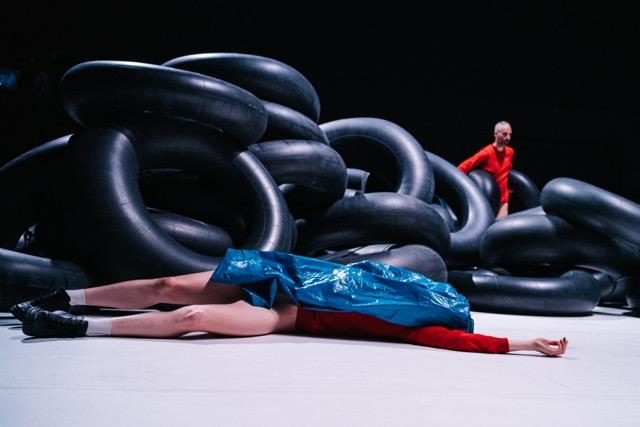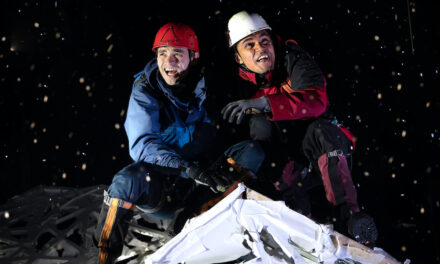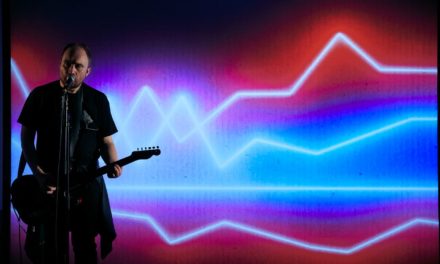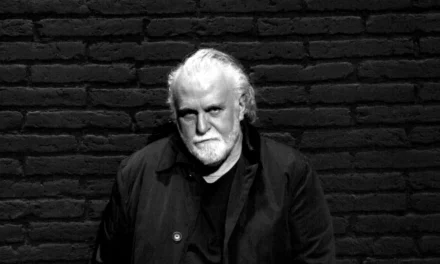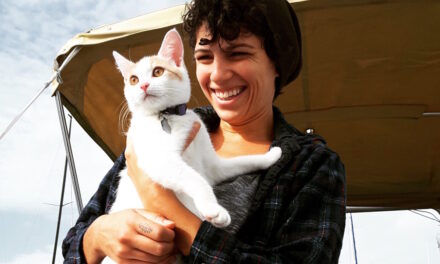In the center of the stage, thirty-six deflated inner tubes are organized in six rows and six columns. An intricate web of little tubes connects them to an air compressor. The eye-catching blue drums in the left corner, the blue rubbish bag on the opposite side, and two structurally striking musical pipes (and of course the goldfish still hidden somewhere) frame this symmetrical inner-tube composition.
This is what you see as soon as you enter the room to attend The Goldfish And The Inner Tube, Ruth Childs and Stéphane Vecchione’s first production, realized in collaboration with the ADC Genève, the CDC Atelier de Paris–Carolyn Carlson, and the Théâtre Arsenic-Lausanne. This image, or rather the performance’s mise-en-scène, gives the impression of a well-composed painting, whose elements, such as colors, lights, and objects, are carefully placed on the imaginary painting surface, creating a pleasant visual and photographic effect.
For about five minutes nothing happens: no one enters, no one leaves. A certain tension starts to build until a weird hissing sound, actually a buzzing noise, begins increasingly to permeate this delightful vision. The disturbingly noisy air compressor is now inflating the thirty-six inner tubes, making their shape become bigger and bigger. At once, just when you are about to cover your ears expecting their explosion, Stéphane Vecchione and Ruth Childs make an entrance and take their place in this unconventional setting.
From this moment forward, in the midst of this cluttered shape-shifting landscape, the two half-naked performers organize situations and arrange events (apparently) without logical purpose or reason. Rhythm, tension, suspense, unpredictability, theatricality, and a complex play of assemblage between performers and objects produce a kind of performative spatiality where deconstruction and construction merge.
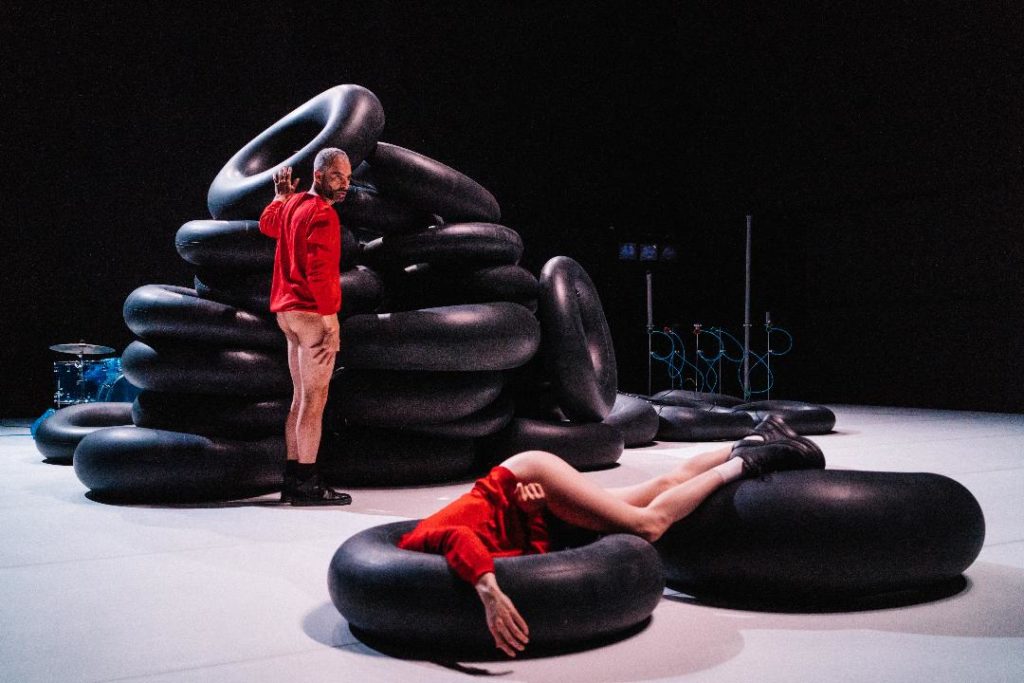
—Photo © Marie Magnin.
Perhaps the best way to talk about this performance is to use the concepts of enchantment and disenchantment. The Goldfish And The Inner Tube, indeed, implicitly reveals the performers’ familiarity with Jane Bennett, the political theorist according to whom enchantment means “to be struck and shaken by the extraordinary that lives amid the familiar.” In other words, Bennett claims that “enchantment with the everyday world might motivate humans to move towards the actual practice of ethical behaviors.”
However, if their nonsensical actions show the sense of wonder and surprise that the delightful and pleasing state of enchantment can provoke, the performers don’t seem to worry about the disturbing effect that could arise from their actions. The whole performance is a dizzying complexity of oppositions, an alternating sequence of situations, a cross between banality and sharpness, randomness and meticulousness, clumsiness and grace. It is a strange combination of delight and disturbance, and this is shown in the way they use their bodies. During the performance, Stéphane Vecchione and Ruth Childs transform themselves into objects both whimsical and sculptural. In spite of their often eccentric gestures and movements which sometimes border on the ridiculous, the two performers do occasionally freeze their bodies in graceful positions, creating still-life performances of unexpected beauty.
When not physically involved in the performance, Stéphane Vecchione accompanies these carefully posed and theatrically lit tableaux vivants on his drums. His energetic thundering solos, reminiscent of Jacques Tati’s Play Time rhythm, are not the only sonic element. The grinding noise of the performers’ shoes on the floor, the hissing sound of the air compressor, the weird PVC-pipes instrument, and finally the amplified sound of the water of the goldfish’s aquarium participate all together in creating the performance soundtrack.
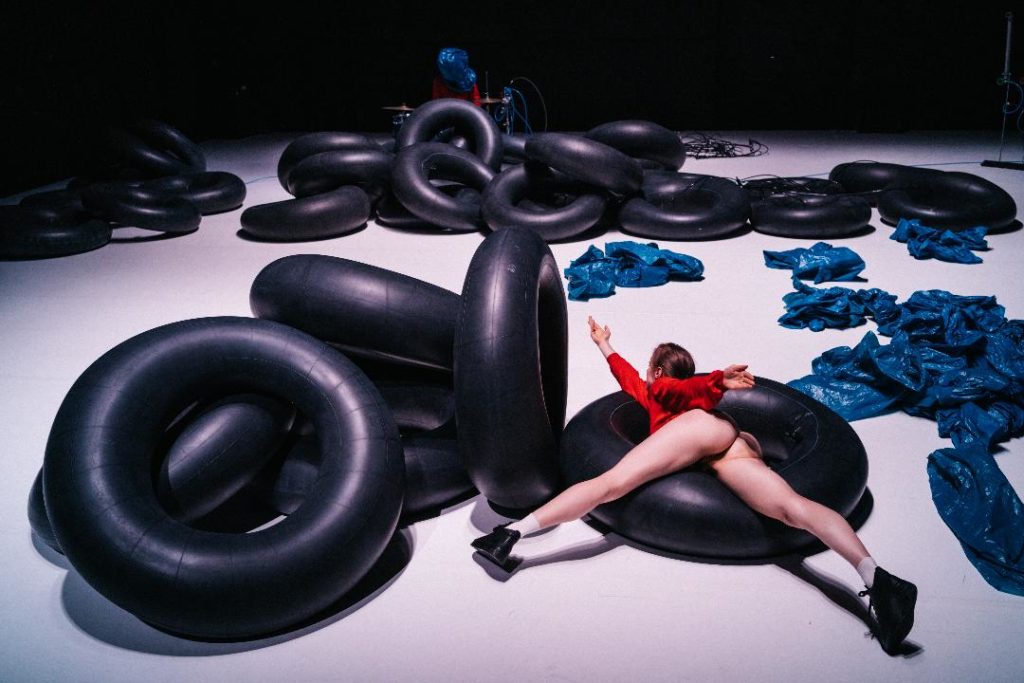
—Photo © Marie Magnin.
Stéphane Vecchione and Ruth Childs seem to have an approach to this work that erases the distinction between living creatures and objects, probably with the aim of showing that they are all of vital importance to the performance. Their strength with this playfulness is to not take themselves too seriously, or maybe to pretend not to.
Obviously, in The Goldfish And The Inner Tube there is no plot, no story. However, the interplay of different (human and non-human) objects and media (music, “non-dance” and performance) seems to generate images and stories in an unconventional way. It is impossible not to see in the whole performance the curious ability of inanimate things to perform, to act, to animate, and to produce a dramatic effect. The illogical narrative emerging from it reminds one of the playful nature of children, of their firm belief that inanimate things can come alive.
The Goldfish And The Inner Tube is Stéphane Vecchione and Ruth Childs’ first production; now we are curious to see their next work and to know whether they will keep celebrating the playful vitality of matter.
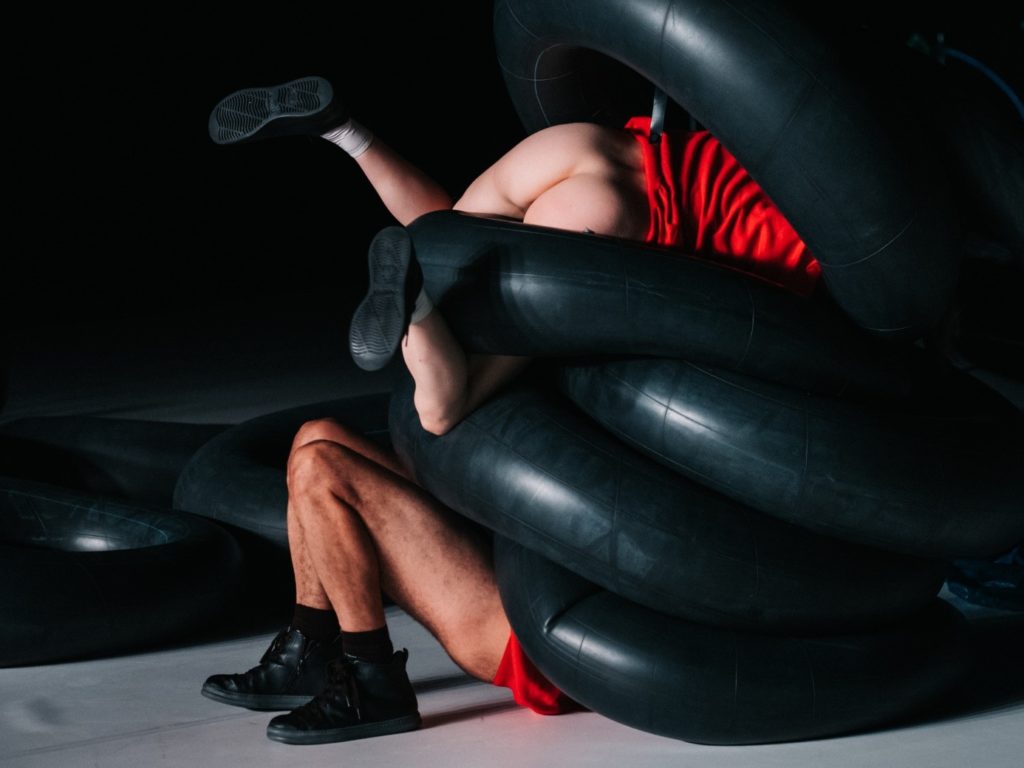
—Photo © Marie Magnin.
Lighting design: Joana Oliveira
Construction: Victor Roy
Outside eye: Michèle Pralong
This post was written by the author in their personal capacity.The opinions expressed in this article are the author’s own and do not reflect the view of The Theatre Times, their staff or collaborators.
This post was written by MARILENA BORRIELLO.
The views expressed here belong to the author and do not necessarily reflect our views and opinions.

